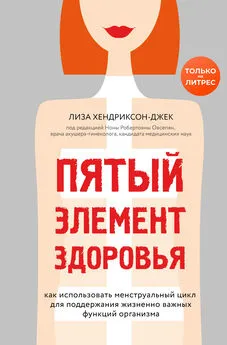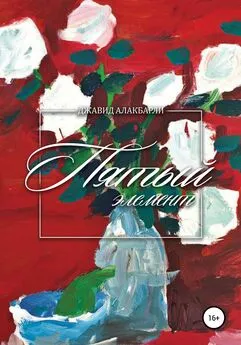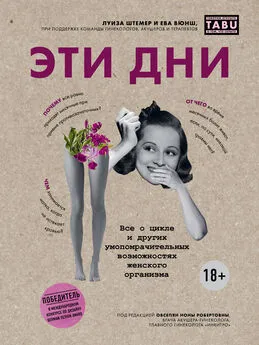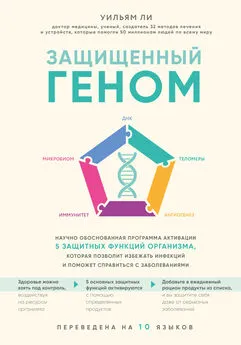Лиза Хендриксон-Джек - Пятый элемент здоровья. Как использовать менструальный цикл для поддержания жизненно важных функций организма
- Название:Пятый элемент здоровья. Как использовать менструальный цикл для поддержания жизненно важных функций организма
- Автор:
- Жанр:
- Издательство:Литагент 5 редакция
- Год:2020
- Город:Москва
- ISBN:978-5-04-104425-1
- Рейтинг:
- Избранное:Добавить в избранное
-
Отзывы:
-
Ваша оценка:
Лиза Хендриксон-Джек - Пятый элемент здоровья. Как использовать менструальный цикл для поддержания жизненно важных функций организма краткое содержание
«Почти» – потому что у женщин есть пятый показатель здоровья, на который, к сожалению, все еще мало кто обращает внимание, – это менструальный цикл. Короткий или длинный, регулярный или непредсказуемый – цикл может быть очень разным, и каждый его параметр, каждое изменение служат индикатором той или иной проблемы в организме. Планируете вы беременность или нет, овуляция имеет значение для поддержания здоровья.
Автор этой книги расскажет, что именно влияет на состояние менструального цикла, и научит вас составлять его график для максимально точного и удобного отслеживания различных изменений и контроля здоровья.
Пятый элемент здоровья. Как использовать менструальный цикл для поддержания жизненно важных функций организма - читать онлайн бесплатно ознакомительный отрывок
Интервал:
Закладка:
23. Deutch, Bente, Eva Bonefeld Jørgensen, and Jens C. Hansen. “Menstrual discomfort in Danish women reduced by dietary supplements of omega-3 PUFA and B12 (fish oil or seal oil capsules).” Nutrition Research 20, no. 5 (2000): 621–631; Moghadamnia, A.A., N. Mirhosseini, M.H. Abadi, A. Omranirad, and S. Omidvar. “Effect of Clupeonella grimmi (anchovy/kilka) fish oil on dysmenorrhoea.” Eastern Mediterranean Health Journal 16, no. 4 (2010): 408–413.
24. Zafari, M., and F. Behmanesh. “Comparison of the effect of fish oil and ibuprofen on treatment of severe pain in primary dysmenorrhea.” Caspian Journal of Internal Medicine 2, no. 3 (2011): 279–282.
25. Wayne, Peter M., Catherine E. Kerr, Rosa N. Schnyer, Anna T.R. Legedza, Jacqueline Savetsky-German, Monica H. Shields, Julie E. Buring et al. “Japanese-style acupuncture for endometriosis-related pelvic pain in adolescents and young women: results of a randomized sham-controlled trial.” Journal of Pediatric and Adolescent Gynecology 21, no. 5 (2008): 247–257; Rubi-Klein, Katharina, Elisabeth Kucera-Sliutz, Helmut Nissel, Michaela Bijak, Daniela Stockenhuber, Matthias Fink, and Evemarie Wolkenstein. “Is acupuncture in addition to conventional medicine effective as pain treatment for endometriosis? A randomised controlled cross-over trial.” European Journal of Obstetrics & Gynecology and Reproductive Biology 153, no. 1 (2010): 90–93; Lund, Iréne, and Thomas Lundeberg. “Is acupuncture effective in the treatment of pain in endometriosis?” Journal of Pain Research 9 (2016): 157–165.
26. Viganò, Paola, Fabio Parazzini, Edgardo Somigliana, and Paolo Vercellini. “Endometriosis: epidemiology and aetiological factors.” Best Practice & Research: Clinical Obstetrics & Gynaecology 18, no. 2 (2004): 177–200; Wu, Meng– Hsing, Yutaka Shoji, Pei-Chin Chuang, and Shaw-Jenq Tsai. “Endometriosis: disease pathophysiology and the role of prostaglandins.” Expert Reviews in Molecular Medicine 9, no. 2 (2007): 1–20; Farquhar, Cynthia. “Endometriosis.” The BMJ 334 (2007): 249–253.
27. Witt, Claudia M., Thomas Reinhold, Benno Brinkhaus, Stephanie Roll, Susanne Jena, and Stefan N. Willich. “Acupuncture in patients with dysmenorrhea: a randomized study on clinical effectiveness and cost-effectiveness in usual care.” American Journal of Obstetrics and Gynecology 198, no. 2 (2008): 166-e1–166-e8; Lin, Jaung-Geng, and Wei-Liang Chen. “Acupuncture analgesia: a review of its mechanisms of actions.” The American Journal of Chinese Medicine 36, no. 04 (2008): 635–645; Cho, Z.H., S.C. Hwang, E.K. Wong, Y.D. Son, C.K. Kang, T.S. Park, S.J. Bai et al. “Neural substrates, experimental evidences and functional hypothesis of acupuncture mechanisms.” Acta Neurologica Scandinavica 113, no. 6 (2006): 370–377; Lin, Li-Li, Cun-Zhi Liu, and Bi-Yu Huang. “Clinical observation on treatment of primary dysmenorrhea with acupuncture and massage.” Chinese Journal of Integrated Traditional and Western Medicine 28, no. 5 (2008): 418–420; Sriprasert, Intira, Suparerk Suerungruang, Porntip Athilarp, Anuchart Matanasarawoot, and Supanimit Teekachunhatean. “Efficacy of acupuncture versus combined oral contraceptive pill in treatment of moderate-to-severe dysmenorrhea: a randomized controlled trial.” Evidence-Based Complementary and Alternative Medicine (2015): 1–10.
28. Grady, H. “Immunomodulation through castor oil packs.” Journal of Naturopathic Medicine 7 (1997): 84–89; Bhakta, Sonali, and Shonkor Kumar Das. “In praise of the medicinal plant Ricinus communis L.: a review.” Global Journal of Research on Medicinal Plants & Indigenous Medicine 4, no. 5 (2015): 95; Rana, Manpreet, Hitesh Dhamija, Bharat Prashar, and Shivani Sharma. “Ricinus communis L. – a review.” International Journal of PharmTech Research 4, no. 4 (2012): 1706–1711.
29. McGarey, William A. (1993). The Oil That Heals: A Physician’s Success with Castor Oil Treatments. Virginia Beach, VA: ARE Press.
30. FFP 018 | Arvigo Abdominal Therapy | Vaginal Steaming | Traditional Maya Healing for Fertility and Menstrual Cycle Irregularities | Dr. Rosita Arvigo.” Fertility Friday Podcast. Podcast Audio, April 15, 2015. fertilityfriday.com/rositaarvigo
31. Definition and History | The Arvigo Techniques of Maya Abdominal Therapy. “Definition and History.” Accessed May 11, 2017. arvigotherapy.com/content/definition-and-history
32. Hendrickson-Jack, Lisa. “FFP 030 | Alignment and Movement for Fertility | Merciér Therapy | Marie Wittman.” Fertility Friday Podcast. Podcast Audio, June 26, 2015. fertilityfriday.com/30; Hendrickson-Jack, Lisa. “FFP 071 | Connecting with the Wisdom of Your Menstrual Cycle | Fertility Massage Therapy | Clare Blake.” Fertility Friday Podcast. Podcast Audio, April 1, 2016. fertilityfriday.com/71
33. “FFP 050 | Journeys in Healing | Arvigo® Therapy for Fertility and Pregnancy | Donna Zubrod & Diane MacDonald.” Fertility Friday Podcast. Podcast Audio, November 6, 2015. fertilityfriday.com/50
34. Green, Monica H., ed. (2013). The Trotula: A Medieval Compendium of Women’s Medicine. Philadelphia, PA: University of Pennsylvania Press.
35. FFP 018 | Arvigo Abdominal Therapy | Vaginal Steaming | Traditional Maya Healing for Fertility and Menstrual Cycle Irregularities | Dr. Rosita Arvigo.” Fertility Friday Podcast. Podcast Audio, April 15, 2015. fertilityfriday.com/rositaarvigo
36. Green, Monica H., ed. (2013). The Trotula: A Medieval Compendium of Women’s Medicine. Philadelphia, PA: University of Pennsylvania Press.
37. Hendrickson-Jack, Lisa. “FFP 202 | Vaginal Steaming for Period Problems | Steamy Chick | Keli Garza.” Fertility Friday Podcast. Podcast Audio, May 25, 2018. fertilityfriday.com/202
Глава 15
1. Dueñas, José Luis, Iñaki Lete, Rafael Bermejo, Agnès Arbat, Ezequiel Pérez-Campos, Javier Martínez-Salmeán, Isabel Serrano, José Luis Doval, and Carme Coll. “Prevalence of premenstrual syndrome and premenstrual dysphoric disorder in a representative cohort of Spanish women of fertile age.” European Journal of Obstetrics & Gynecology and Reproductive Biology 156, no. 1 (2011): 72–77; Takeda, T., K. Tasaka, M. Sakata, and Y. Murata. “Prevalence of premenstrual syndrome and premenstrual dysphoric disorder in Japanese women.” Archives of Women’s Mental Health 9, no. 4 (2006): 209–212.
2. Tschudin, Sibil, Paola Coda Bertea, and Elisabeth Zemp. “Prevalence and predictors of premenstrual syndrome and premenstrual dysphoric disorder in a population-based sample.” Archives of Women’s Mental Health 13, no. 6 (2010): 485–494; Dueñas, José Luis, Iñaki Lete, Rafael Bermejo, Agnès Arbat, Ezequiel Pérez-Campos, Javier Martínez-Salmeán, Isabel Serrano, José Luis Doval, and Carme Coll. “Prevalence of premenstrual syndrome and premenstrual dysphoric disorder in a representative cohort of Spanish women of fertile age.” European Journal of Obstetrics & Gynecology and Reproductive Biology 156, no. 1 (2011): 72–77; Takeda, T., K. Tasaka, M. Sakata, and Y. Murata. “Prevalence of premenstrual syndrome and premenstrual dysphoric disorder in Japanese women.” Archives of Women’s Mental Health 9, no. 4 (2006): 209–212; ACOG committee opinion. Premenstrual syndrome. Number 155–April 1995 (replaces no. 66, January 1999). Committee on Gynecologic Practice. American College of Obstetricians and Gynecologists. International Journal of Gynecology & Obstetrics 50 (1995): 80–84.
3. Prior, Jerilynn C., Chiaki Konishi, Christine L. Hitchcock, Elaine Kingwell, Patti Janssen, Anthony P. Cheung, Nichole Fairbrother, and Azita Goshtasebi. “Does molimina indicate ovulation? Prospective data in a hormonally documented single-cycle in spontaneously menstruating women.” International Journal of Environmental Research and Public Health 15, no. 5 (2018): 1016.
4. Magyar, David M., Stephen P. Boyers, John R. Marshall, and Guy E. Abraham. “Regular menstrual cycles and premenstrual molimina as indicators of ovulation.” Obstetrics & Gynecology 53, no. 4 (1979): 411–414; Harvey, Anne T., Christine L. Hitchcock, and Jerilynn C. Prior. “Ovulation disturbances and mood across the menstrual cycles of healthy women.” Journal of Psychosomatic Obstetrics & Gynecology 30, no. 4 (2009): 207–214.
5. Owen, Lara. (2008). Her Blood Is Gold: Awakening to the Wisdom of Menstruation. Wimborne, UK: Archive Publishing, 60.
6. Scommegna, Antonio, and W. Paul Dmowski. “Dysfunctional uterine bleeding.” Clinical Obstetrics and Gynecology 16, no. 3 (1973): 221–254.
7. Lovick, Thelma A., Vinicius G. Guapo, Janete A. Anselmo-Franci, Camila M. Loureiro, Maria Clara M. Faleiros, Cristina M. Del Ben, and Marcus L. Brandão. “A specific profile of luteal phase progesterone is associated with the development of premenstrual symptoms.” Psychoneuroendocrinology 75 (2017): 83–90; Munday, M.R., M.G. Brush, and R.W. Taylor. “Correlations between progesterone, oestradiol and aldosterone levels in the premenstrual syndrome.” Clinical Endocrinology 14, no. 1 (1981): 1–9; Wide, Leif, Ragnar So, and Hans Carstensen. “FSH, LH, TeBG-capacity, estrogen and progesterone in women with premenstrual tension during the luteal phase.” Journal of Steroid Biochemistry 7, no. 6–7 (1976): 473–476.
8. Stewart, W.F., C. Wood, M.L. Reed, J. Roy, and R.B. Lipton. “Cumulative lifetime migraine incidence in women and men.” Cephalalgia 28, no. 11 (2008): 1170–1178; Pizzorno, Joseph E., and Michael T. Murray. (2013). Textbook of Natural Medicine, 4th edition. St. Louis, MO: Elsevier/Churchill Livingstone, 1468.
9. Pavlović, Jelena M., Walter F. Stewart, Christa A. Bruce, Jennifer A. Gorman, Haiyan Sun, Dawn C. Buse, and Richard B. Lipton. “Burden of migraine related to menses: results from the AMPP study.” The Journal of Headache and Pain 1, no. 16 (2015): 1–11; Granella, Franco, Grazia Sances, Carla Zanferrari, Alfredo Costa, Emilia Martignoni, and Gian Camillo Manzoni. “Migraine without aura and reproductive life events: a clinical epidemiological study in 1300 women.” Headache: The Journal of Head and Face Pain 33, no. 7 (1993): 385–389; Warnock, Julia K., Lawrence J. Cohen, Harvey Blumenthal, and Jordan E. Hammond. “Hormone-related migraine headaches and mood disorders: treatment with estrogen stabilization.” Pharmacotherapy: The Journal of Human Pharmacology and Drug Therapy (2016): 120–128; Sacco, Simona, Silvia Ricci, Diana Degan, and Antonio Carolei. “Migraine in women: the role of hormones and their impact on vascular diseases.” The Journal of Headache and Pain 13, no. 3 (2012): 177–189; MacGregor, E.A., A. Frith, J. Ellis, L. Aspinall, and A. Hackshaw. “Incidence of migraine relative to menstrual cycle phases of rising and falling estrogen.” Neurology 67, no. 12 (2006): 2154–2158.
10. MacGregor, E. Anne, and Allan Hackshaw. “Prevalence of migraine on each day of the natural menstrual cycle.” Neurology 63, no. 2 (2004): 351–353; Warnock, Julia K., Lawrence J. Cohen, Harvey Blumenthal, and Jordan E. Hammond. “Hormone-related migraine headaches and mood disorders: treatment with estrogen stabilization.” Pharmacotherapy: The Journal of Human Pharmacology and Drug Therapy (2016): 120–128.
11. Abraham, G.E. “Nutritional factors in the etiology of the premenstrual tension syndromes.” The Journal of Reproductive Medicine 28, no. 7 (1983): 446–464.
12. Abraham, G.E., and R.E. Rumley. “Role of nutrition in managing the premenstrual tension syndromes.” The Journal of Reproductive Medicine 32, no. 6 (1987): 405–422.
13. Там же.
14. Bäckström, T., and B. Mattsson. “Correlation of symptoms in pre-menstrual tension to oestrogen and progesterone concentrations in blood plasma.” Neuropsychobiology 1, no. 2 (1975): 80–86.
Читать дальшеИнтервал:
Закладка:









